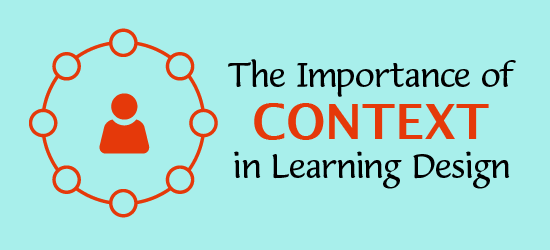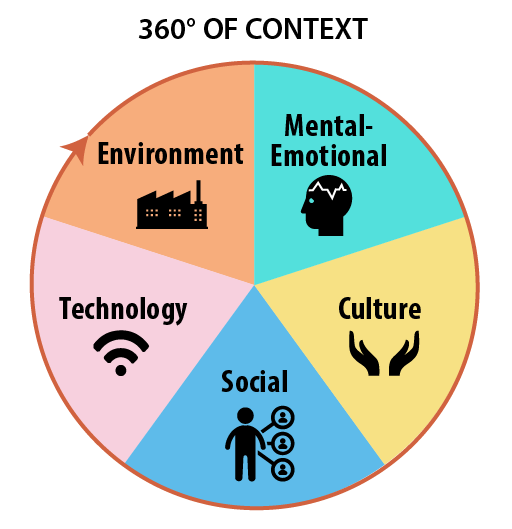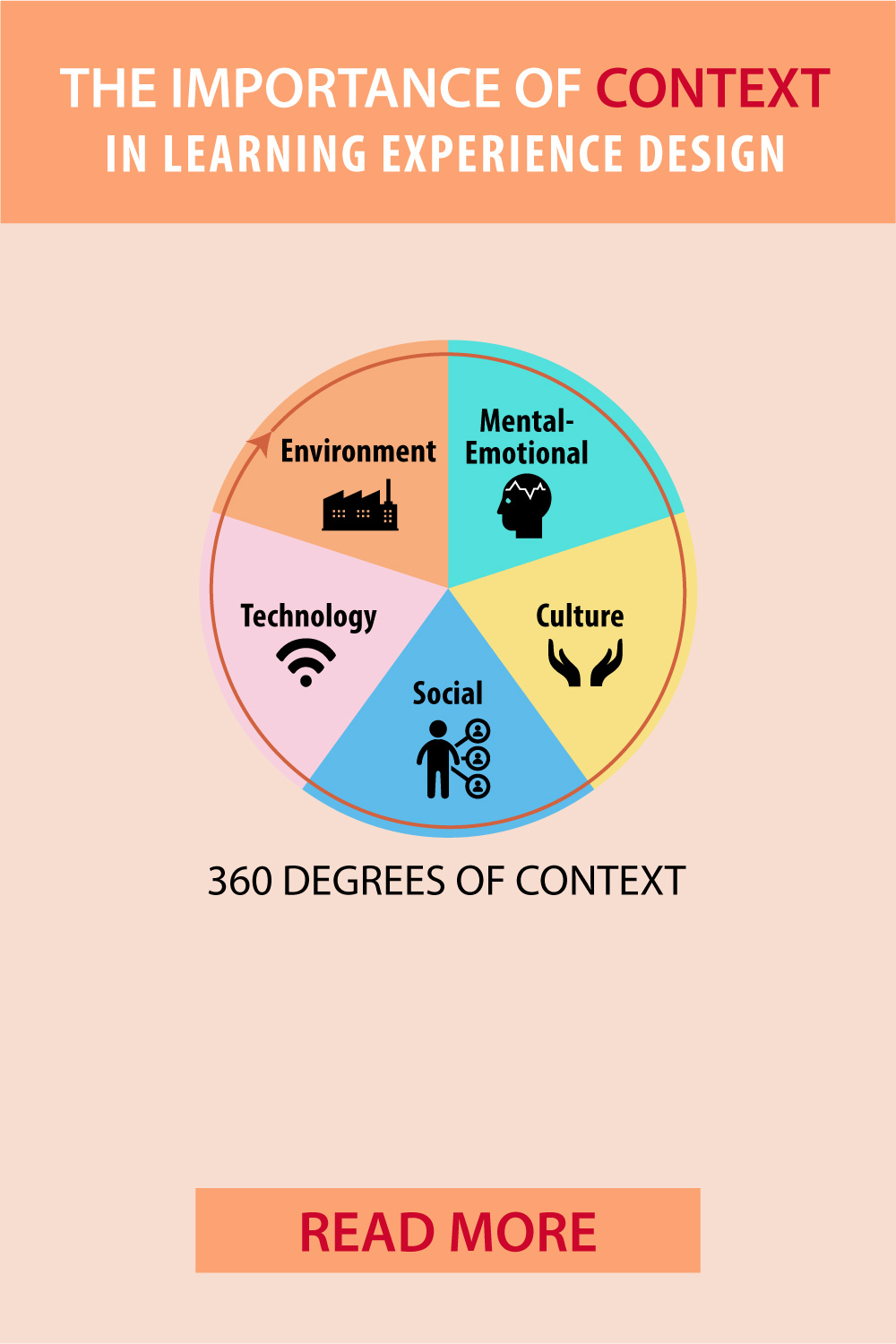
As the need for greater work-learning integration increases, the context of learning becomes ever more important. Context shapes the learning experience. By examining the multi-layered world of people at work, we can begin to understand the constraints of a person’s situation as well as its hidden opportunities. Considering context in learning design may lead us to produce more holistic and effective solutions for performance improvement.
An examination of context allows us to address the fact that learning is not just a mental activity that occurs in a vacuum. Rather, many interacting factors affect workplace learning and performance.
Contextual Analysis
Contextual analysis is not new. Research in this area dates back to the 1960’s and was reinvigorated again in the 1990’s. Yet, this was before the pervasive impact of technology and before much thought was given to the user experience. It was also before learning experience designers were able to think in terms of broad solutions that reach beyond training.
In user experience design, there is a practice known as context mapping. It is one way to examine all of the factors that influence a person’s experiences with products in order to design ones that will fit well into their lives.
Can our own version of contextual analysis help us improve workplace learning and performance? I think it can if we examine context from a 360° degree perspective. To me, this includes the target audience’s work environment (physical, cultural, social and technological) as well as their inner environment (mental and emotional state).
In the diagram below, these individual factors are represented as part of a whole because they interact and influence each other. Context is “a multilevel body of factors in which learning and performance are embedded” (Tessmer & Richey, 1997). Understanding context—the universe that people inhabit at work—provides us with more information to design well-integrated performance improvement solutions.

Contextual Factors to Consider
Physical Environment
To understand the learning context, it is important to observe the characteristics of the physical environment where people work and learn. For example, the stressful environment of a hospital or the noisy environment of a stock exchange presents different challenges for performance support than that of a quiet office. Observing the physical environment allows you to identify:
- location where work occurs (in the field, behind a desk, in a factory, etc.)
- where the skill and knowledge gaps reveal themselves
- level of noise, distraction and congestion in the workplace
- uniforms or equipment that could interfere with learning technologies
- atmosphere created by the spatial design
- whether current strategies are effective in the work environment
Mental-Emotional State
Through interviews, focus groups and discussions with sample audience members, you can better understand the mental and emotional factors evoked at work. Some aspects to explore include:
- individual career ambitions and goals
- expectations of work versus its reality
- motivation to work, learn and improve
- the value audience members see in their job roles
- work pressures/stress that they experience
- how work fits into the rest of their lives
By empathizing with the inner world of your target audience, you will be better able to design solutions that are attuned to how people work and learn on the job today. Learn more about personas and empathy maps as a way to better understand your audience.
Culture
Organizational culture reflects the society of the workplace. It encompasses many aspects of work, including the learning climate. By delving into the organizational culture, you can identify:
- how the organization values learning and career growth
- types of support at work for informal and formal learning
- availability of learning resources
- the social technologies available for learning
- whether mentors and coaches can provide support
- opportunities for feedback and reflection
Social
Situated learning theory focuses on the learning embedded in social situations and relationships. By understanding the social relationships of a target audience group, you can develop a sense of how people learn through social interactions at work. To explore the social context, consider:
- interactions with peers
- degree of cooperation within teams and subgroups
- how people collaborate to complete work
- relationships with managers and supervisors
- existence of communities of practice and informal meetups
- HR support
- influence of leaders on the workplace
The social context can help you design learning experiences that leverage real world situations and positive social interactions.
Technology
Technology is embedded in many job roles. This will continue to grow with the emergence of AI. The technological engagement of the target audience, therefore, is important to gauge. It may help you generate a solution that fits with how people are already working. Some aspects of technological context to explore include:
- types of devices used for work and at work
- platforms used by most people
- underutilized software
- legacy software getting phased out
- social media platforms used to connect and collaborate at work
- technology used by subgroups or used under the radar
- technology evangelists
- IT policies and relationships
Conclusion
Through contextual research, you can develop an integrated picture of your target audience’s work life. Through this picture, I believe we can design more innovative and effective solutions that bring learning as close to the real world of work as possible. See Probes for Context Mapping from the Interaction Design Foundation.
Reference:
- Tessmer, M. and Richey, R. Educational Technology Research and Development, Vol 45, No. 2, 1997, pp. 85-115.


Have you tried int he past some kind of survey for students considering all these contextual factors? I think this could be a very good tool to know more about the realities/contexts of our students.
Wonderful article! Very helpful!
Hi Carolyn,
I’m glad you found this valuable.
Connie
This was interesting – breaking it down into relevant areas to consider. It was helpful
Thank you for this useful, well structured article, bringing together so many aspects of effective content design contextualised to a T. This approach will certainly help make learning stick.